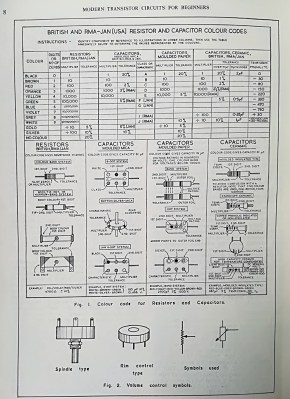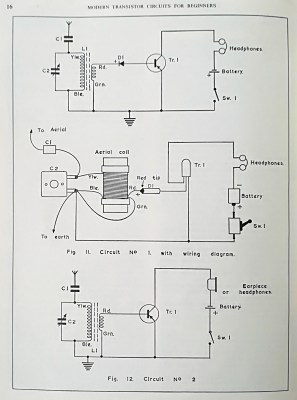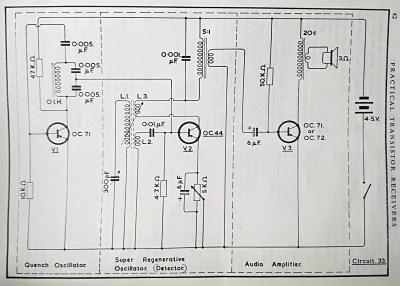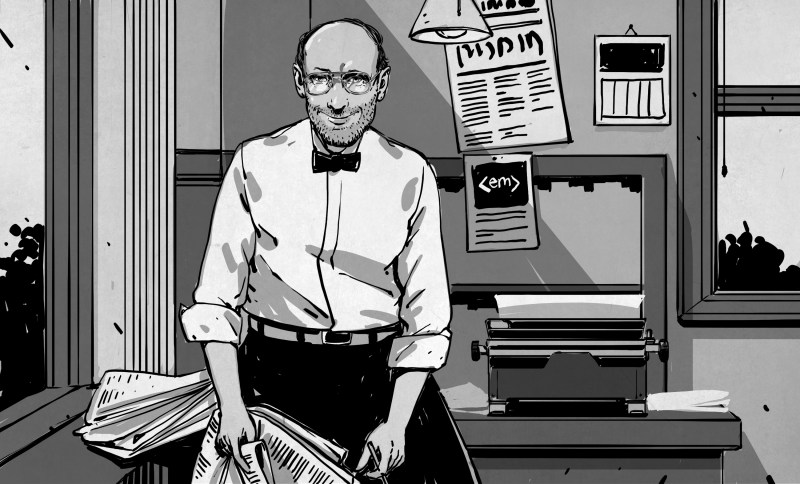A reasonable selection of the Hackaday readership will have had their first experiences of computing on an 8-bit machine in a black case, with the word “Sinclair” on it. Even if you haven’t work with one of these machines you probably know that the man behind them was the sometimes colourful inventor Clive (now Sir Clive) Sinclair.

He was the founder of an electronics company that promised big results from its relatively inexpensive electronic products. Radio receivers that could fit in a matchbox, transistorised component stereo systems, miniature televisions, and affordable calculators had all received the Sinclair treatment from the early-1960s onwards. But it was towards the end of the 1970s that one of his companies produced its first microcomputer.
At the end of the 1950s, when the teenage Sinclair was already a prolific producer of electronics and in the early stages of starting his own electronics business, he took the entirely understandable route for a cash-strapped engineer and entrepreneur and began writing for a living. He wrote for electronics and radio magazines, later becoming assistant editor of the trade magazine Instrument Practice, and wrote electronic project books for Bernard’s Radio Manuals, and Bernard Babani Publishing. It is this period of his career that has caught our eye today, not simply for the famous association of the Sinclair name, but for the fascinating window his work gives us into the state of electronics at the time.
Step back to a time when AM was king …

With a little persistence we were able to locate some of the early [Sinclair] work: 1959’s Practical Transistor Receivers Book 1, and 1962’s Modern Transistor Circuits For Beginners. They are both slimline paperback volumes roughly the size of an A4 or US Letter sheet, and contain 36 and 35 different circuits respectively.
Practical Transistor Receivers was one of the first such books on transistor circuitry from this publisher, and was evidently intended to serve as a transistor primer for constructors who had never used the new devices. There is an extensive section on both the range of transistors and of diodes that were on the market in 1958 when it was written. This is an interesting read in itself, containing as it does a look at many long-disappeared names in the industry on both sides of the Atlantic. All the semiconductors are germanium, diodes are point-contact, all but a few transistors are PNP, and though there are no point-contact transistors by this stage in the decade all but a few surface barrier devices use alloy-diffusion construction. Gain and cut-off frequency figures are extremely low by today’s standards, these devices are still very much the earliest examples of their type.
Modern Transistor Circuits For Beginners is pitched more towards people unfamiliar with electronics, and contains a chapter introducing the components of the day. There are the discrete components that will be familiar to readers in 2017, but also a table of colour codes with examples of devices you might not have encountered that use them. You know about resistors with coloured bands, but have you ever seen a tip-body-and-dot resistor?

It is especially interesting that both books deal with exactly the same subject of simple AM radio receivers, despite the title of Modern Transistor Circuits leading the reader to believe otherwise. Electronics was entirely synonymous with radio and audio at the amateur level at the time, and this book follows a trend that is evident from the list of other titles from the same publisher on the back cover.
The circuits start with the very simplest receivers which are not much more than a crystal set with an audio stage added, and move through tuned-radio-frequency designs to regenerative and super-regenerative receivers. Modern Transistor Circuits has a few layout diagrams for good measure, to aid the beginner in identifying transistor leads.
Another feature of these circuits is that they show an obvious heritage from the tube-based circuits that anyone involved in electronics would have been familiar with at the time. Transformers are used as inter-stage coupling where we would now use a capacitor or a level shifting circuit, and power amplifiers are high-impedance single-ended designs. The super-regenerative circuit has a quench oscillator using a sizeable LC tuned circuit, where an RC oscillator of some type would almost certainly be placed in a modern take on the same design.
… and transistors cost an arm and a leg.

Nearly sixty years ago a transistor was an exotic and expensive device. Equivalents for an OC71 audio transistor appear in an advert in the back of Modern Transistor Circuits for 5 shillings and 9 pence, which with a bit of conversion to decimal currency and taking into account the inflation of the intervening years, equates to £6.03, or $8.45 in 2018 terms. Today I can buy a tape of 40 2N3904 silicon transistors with a gain figure in the several hundreds and a cut-off frequency in the high VHF range for that price from a retail supplier, and of course for similar prices I can also benefit from five decades of integrated circuit development. It’s possible then that radio circuits were the main outlet for electronics enthusiasts at the time because they were something that could deliver a reasonable result from a circuit with relatively few components, anything requiring multiple devices would have soon bankrupted anyone wanting to try them.
![A Sinclair miniature radio in the Science Museum, London. Frankie Roberto [CC BY 2.0].](https://hackaday.com/wp-content/uploads/2018/03/sinclairmicromatic.jpg?w=335)
Footnote: though Sir Clive Sinclair is a published author and famous name in the world of home computers, it is fair to say that he is not the Clive Sinclair, author. That honour must go to Clive Sinclair, the prolific British novelist, who sadly died at the start of March 2018.
















I wonder how many have missed Jenny’s reference about “the other author”?
B^)
not only have i missed it but i’ve gone into the comments to have it explained to me and see only you, not explaining it to me. boo.
From bottom of the post:
Footnote: though Sir Clive Sinclair is a published author and famous name in the world of home computers, it is fair to say that he is not the Clive Sinclair, author. That honour must go to Clive Sinclair, the prolific British novelist, who sadly died at the start of March 2018.
He “sadly died”
(sniff!)
Is there any other way?
[Ostracus]
“Hold my beer and watch this!”
B^)
thanks
But, did the prolific British novelist write using a computer? I mean, what if he wrote his novels on a Sinclair computer?That would really be confusing to me.
One cannot overestimate the impact Sir Clive has had on computing in the UK and Europe.
Bad or good? More than C. A. R. Hoare or Wirth or Dijkstra?
You only know who Hoare or Wirth or Dykstra were/are if you were already into computers. Sinclair provided the gateway drug.
Most likely the people who know who Hoare, Wirth or Dykstra are were already into computers. Sinclair provided the gateway drug for many.
Good. More. The ZX Specturm in particular begat a generation of programmers. That first step of getting young people to code is more important IMHO than a neat algorithm or another language.
W.T.F.?.!.?.!.?
If that’s what you think of or know of Dijkstra and Hoare your opinion isn’t worth the bytes used to express it.
Really… Two of the giants of computer science worth less than some small late stage computer that could be used for some games*?
(* /s)
not my point or intention at all to diminish Dijkstra et al. As stated, IN MY HUMBLE OPINION, getting thousands of people into coding had a big impact.
Dijkstra and Hoare did really a huge amount for software developers! For the 500 software developers in the world, at that time…
Clive Sinclair got them the software developers that made their work worthwhile in the end.
Seriously curious. The influence in Silicon Valley was near zero. Was the Jupiter Ace a spinoff? Some of the Forth guys had those. I recall people referring tot eh little wedge shaped computer as a door stop.
Didn’t he produce a little toy three wheeled tippy car like the ones featured on Mr. Bean?
No, it was a recumbent tricycle with two wheels in the back and a shell. Your head and shoulders stuck up out of it. An odd design, the steering bar was under your knees. No throttle, the motor was controlled by a momentary pushbutton so it was all on or all off. The wheels had plastic rims which would wear out very quickly,
for a recumbent, handlebars under the legs is not an uncommon configuration – The C5 would have been a lot more practical with a speed control and a substantially more powerful motor – the 250W is rather anemic by any standard. Colin Furze’s “monster” C5 is a better example :-) https://www.youtube.com/watch?v=nGu7g7ZSyJM
“You know about resistors with coloured bands, but have you ever seen a tip-body-and-dot resistor?”
Surprisingly, yes.
Also remember Timex Sinclair 1000 as “the first computer under a $100” as featured on the cover of Popular Science.
Also sold as a kit in OMNI magazine for $49.95 … I know, I built one.
Purchased at closeout Sears, $29.95
Followed 2 months(?) later by the 16Kb Expansion, $29.95
Ruined 4 months later trying to connect a real keyboard to it.
I got my ZX80 brand new at a department store in 1983 for ZAR10.00, when the ZX81 stock arrived. R10.00 was about US$10.00 at 1983 rates.
The ZX80 also got me into coding (after my Dad’s Motorola 6800 kit). Coding still pays my rent now in 2018
I thought Body-End-Dot (BED) resistors were mostly obsolete by World War Two, although they are shown in the component reference in many Heathkit manuals from the 1960’s, along with 6-dot capacitors, etc. Hobbyists use old scrounged components. They are one of the components that frequently have gone bad in 1920’s or 1930’s radios, along with paper capacitors. I’ve got bunches of them, many still on the sales cards. A half-watt BED resistor may be larger than a modern 5-watt one.
The books can be found online at: http://www.americanradiohistory.com
Nice! Thanks for sharing :)
That man was a genious.
Got me into computing and eventually Commodore.
Unforgettable.
Yes, a genius… in some aspects… because launching the C5 was a big error: so small that was nearly invisible to trucks, so the government didn’t allow it to be used in public roads.
He did other strange things too but that doesn’t mean he isn’t a genius. The drive to make things available to the general public is what he stands for to me, that he failed with an electric vehicle (if it can even be called that ;P) just means he attempted something no other would think possible to do.
Rubbish. The C5 is perfectly legal to use on the road. Inadvisable, maybe…
Exactly. A friend of Hackaday brought one to SHA Camp last year. I had a ride in it, a bit cramped for me but surprisingly good fun.
I see that those “simplest receivers” use a Germanium transistor “bug”, namely leakage. In this way they did not need the base bias resistor to establish some collector current.
Trying my first receivers, none of them worked because they used silicon transistors, and at the time I didn’t know why the design copied from the 60’s doesn’t work …
I got started in electronics (failing to) building Sinclair circuits — the Black Watch, matchbox radio and ZX81. The products were innovative, but very poor quality and robustness.
The 3-transistor circuit above won’t work — V2 needs another resistor to (negative !) supply to bias the base.4k7 would work. As-is, the transistor isn’t biased.
I wondered whether the quench oscillator would drive it into bias on each cycle.
It can’t — all other signals are capacitor-coupled — there is no path for current out of the transistor’s base.
Didn’t a lot of the early circuits rely on the transistors being so leaky they biased themselves?
That would sound like a Sinclair-type thing to do. Leaky devices would have widely varying leakage, and it would vary unpredictably with temperature (even ‘room temperature’ variations). I would certainly never design a circuit that depended on that; I doubt you could get anything reasonable into production. In this circuit, the leakage would have to overcome the 4k7 — I don’t suspect it would (maybe, maybe you’d get 1 uA coll-base junction leakage — 4k7 kills that).
Great bloke, Mensa chairman… sadly ridiculed for the C5
I do not know how “historically accurate” the 2009 movie “micro men” was, but I do know I quite enyoyed it.
Didn’t he sell out of spec transistors for cheap?
Yes. He bought huge quantities of surplus components, then tested them and sold the working ones quite cheaply.
Am I the only one who first click “Report comment”, then Reply. By mistake. *Much* too often?
Yes, I believe you are the first to do so.
Remain here while we find a suitable punishment for you.
Promote to middle-management.
When a friend of mine’s children wanted a computer, he purchased them a Sinclar Z80 and supporting components. Taught them to program and write programs that they needed. Long time ago, I wonder how they turned out.
To many people of a certain vintage in the UK, a world without the Sinclair ZX spectrum is inconceivable.
According to legend – Sinclair salvaged many sacks of “off spec” transistors from the construction site for a new electronics factory – where they had been dumped as aggregate to use in the concrete foundations. These he tested for gain, at his kitchen table, and he, and his wife of the time, graded them with a red spot, yellow, spot or blue spot of paint. Not only did he design and author the books of transistor circuits – but he supplied affordable transistors to the hobbyists of the 1960s.
Later, during the pocket calculator craze of the mid-1970s, his engineer Nigel Searle discovered how to reprogram the ROMs of low cost 4 function calculator chips – so that they would produce trig functions – but very slowly. Thus he was able to undercut the $395 HP-35, and sell his scientific calculator for just $100.
http://files.righto.com/calculator/sinclair_scientific_simulator.html
His products always squeezed the last drop of functionality out of any component.
Like any entrepreneur – he saw opportunity and took it.
Relatedly, found this interesting link in my bookmarks. The musings of an early ’70s Sinclair employee;
http://www.polymathperspective.com/?p=408
I owned a Timex Sinclair computer. The machine used a Z80 processor. The first thing I did with mine is increase the RAM 4X by pulling up the chip select lines on the RAM chips then piggy backing three more chips on the back of them, each with it’s chip select pulled out. Then I wired a 74LS139 into the right address lines and soldered the outputs to the roes of CS pins. My only complaint about the computer was the terrible expansion port. Everything just stacked up back there and you could just move the computer the wrong way and lose everything!
I enjoyed my ZX Spectrum here too. It was extremely popular in Spain as well. I built some expansion cards as well, basically to drive relays and read digital inputs. I wouldn’t say the expansion port was bad, it was 100% open. It had direct access to every CPU pin. I mean, if you knew what you were doing, you had full power. I agree that it was a little insecure in the physical aspect and if you accidentally unplugged anything from it while on, it fried some IC inside